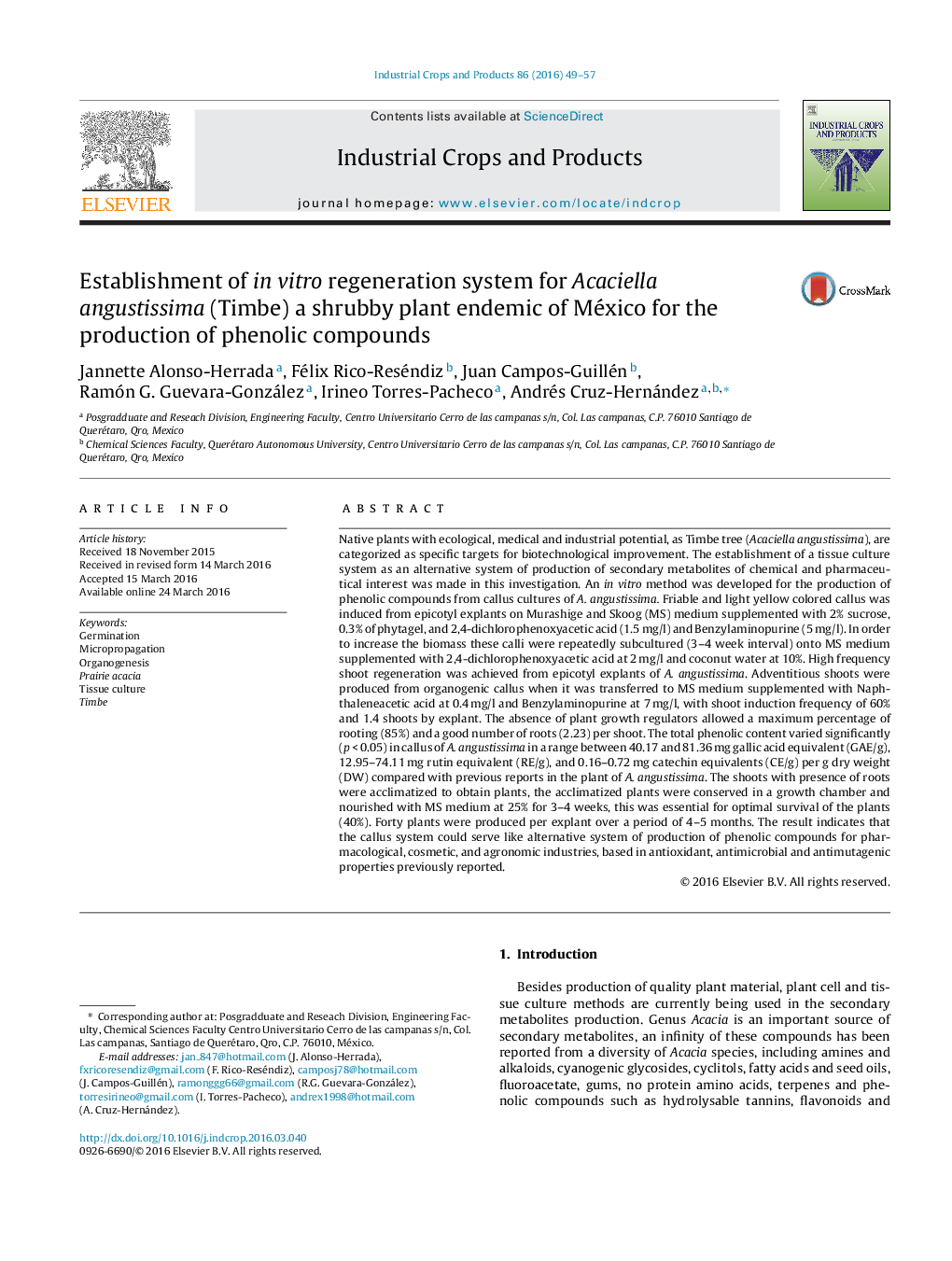| کد مقاله | کد نشریه | سال انتشار | مقاله انگلیسی | نسخه تمام متن |
|---|---|---|---|---|
| 4512518 | 1624824 | 2016 | 9 صفحه PDF | دانلود رایگان |

• 2,4-dichlorophenoxyacetic acid and Benzylaminopurine favors the formation of callus of Acaciella angustissima.
• Shoot frequency regeneration was obtained with NAA at 0.4 mg/l and BAP at 7 mg/l.
• A regeneration system of Acaciella angustissima was established.
• Methanolic extracts of callus is a good source of phenolic compounds.
• Alternative system of production of phenolic compounds was proposed.
Native plants with ecological, medical and industrial potential, as Timbe tree (Acaciella angustissima), are categorized as specific targets for biotechnological improvement. The establishment of a tissue culture system as an alternative system of production of secondary metabolites of chemical and pharmaceutical interest was made in this investigation. An in vitro method was developed for the production of phenolic compounds from callus cultures of A. angustissima. Friable and light yellow colored callus was induced from epicotyl explants on Murashige and Skoog (MS) medium supplemented with 2% sucrose, 0.3% of phytagel, and 2,4-dichlorophenoxyacetic acid (1.5 mg/l) and Benzylaminopurine (5 mg/l). In order to increase the biomass these calli were repeatedly subcultured (3–4 week interval) onto MS medium supplemented with 2,4-dichlorophenoxyacetic acid at 2 mg/l and coconut water at 10%. High frequency shoot regeneration was achieved from epicotyl explants of A. angustissima. Adventitious shoots were produced from organogenic callus when it was transferred to MS medium supplemented with Naphthaleneacetic acid at 0.4 mg/l and Benzylaminopurine at 7 mg/l, with shoot induction frequency of 60% and 1.4 shoots by explant. The absence of plant growth regulators allowed a maximum percentage of rooting (85%) and a good number of roots (2.23) per shoot. The total phenolic content varied significantly (p < 0.05) in callus of A. angustissima in a range between 40.17 and 81.36 mg gallic acid equivalent (GAE/g), 12.95–74.11 mg rutin equivalent (RE/g), and 0.16–0.72 mg catechin equivalents (CE/g) per g dry weight (DW) compared with previous reports in the plant of A. angustissima. The shoots with presence of roots were acclimatized to obtain plants, the acclimatized plants were conserved in a growth chamber and nourished with MS medium at 25% for 3–4 weeks, this was essential for optimal survival of the plants (40%). Forty plants were produced per explant over a period of 4–5 months. The result indicates that the callus system could serve like alternative system of production of phenolic compounds for pharmacological, cosmetic, and agronomic industries, based in antioxidant, antimicrobial and antimutagenic properties previously reported.
Figure optionsDownload as PowerPoint slide
Journal: Industrial Crops and Products - Volume 86, August 2016, Pages 49–57